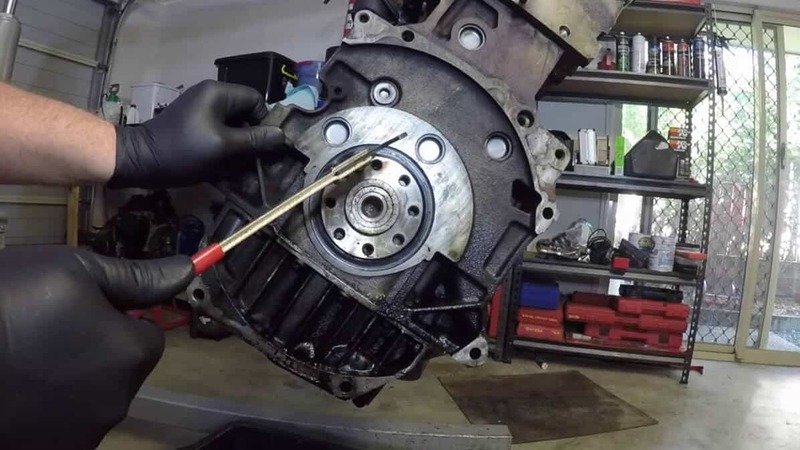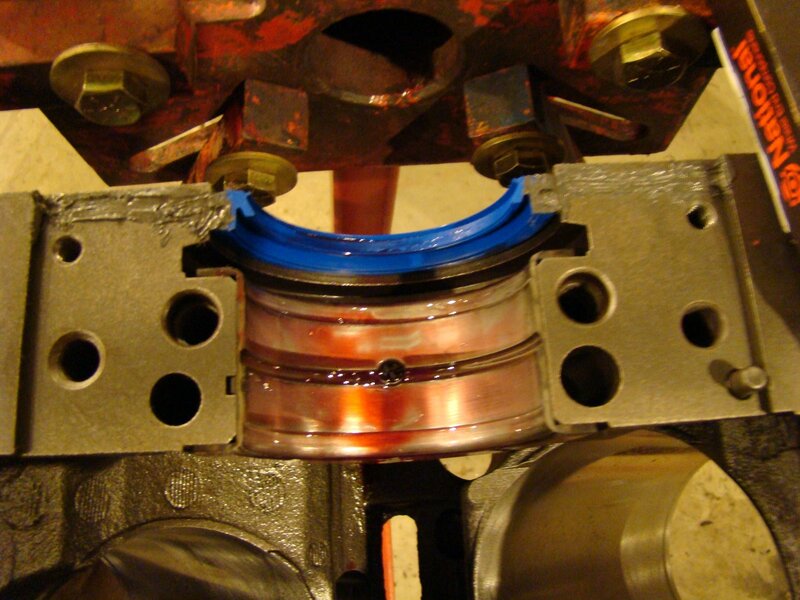Every engine in an automobile uses a crankshaft to drive its pistons, and this crankshaft is submerged in engine oil. The rear main seal is attached to the end of the engine crankshaft to ensure engine oil does not seep or leak out.
Since the rear main seal is mechanical, it will wear down and get damaged over time. This can can cause many problems for the vehicles; therefore, it must be replaced as soon as possible.
If you have a damaged rear main seal, you might wonder how much you will need to replace the old one with a new one.
In this article, we will learn more about the rear main seal, the signs and causes of its damage, and its replacement cost.
We begin!
What is there to Know about Rear Main Seal?
Before explaining how to replace the rear main seal and how much it costs, we must first understand what the rear main seal is, its function, and its working principle.
The rear main seal is located at the end of the crankshaft in every engine; however, its actual position in the engine bay might vary according to the kind of vehicle.
Rear-wheel drives, front-wheel drives, and all-wheel drives have the rear main seal at different engine bay positions.
The rear main seal is situated in a tight position where the engine’s end is connected to the transmission for all the rear-wheel drives and all-wheel drives that come with a V engine or an inline engine. In this vehicle, the rear main seal is very difficult to access, as replacing it will involve dismantling the transmission system and accessing the back of the engine.
However, front-wheel drive engines are designed to be mounted with a latitudinal orientation, for the back of the engine would be on the opposite side of the idler pulleys and serpentine belt. This vehicle allows easier access to the rear main seal for replacement.
What is the Rear Main Seal Replacement Cost?
Replacing the rear main seal is very expensive, and it’s always wise to be sure it is a problem before replacing it.
The cost of replacing a rear main seal can be anywhere from $650 to $2000, depending on the type of vehicle and its brand.
The rear main seal is built with either silicone or rubber materials which can withstand elevated temperatures and high cyclic stresses. The main purpose of the rear main seal is to ensure that engine oil does not leak out of the engine’s crankcase.
Whenever the rear main seal on an engine fails, it is wise to replace it with a new one as soon as possible because the engine oil within the crankcase can leak out within short periods and lead to Total engine failure.

How to Know if your Rear Main Seal is Bad
Smoke From Under the Car
The rear main seal is located close to the base of the vehicle, and therefore when oil seeps out of this seal, the oil can find its way to vehicle components that operate at high temperatures.
Once the leaking engine oil comes in contact with these hot components, they vaporize immediately and produce smoke from under the vehicle.
The exhaust pipe is one component that operates at high temperatures beneath the car.
Also Read: Engine Replacement Cost
Oil Leaks Beneath the Vehicle
A very visible symptom of a faulty rear main seal is the site of oil produced beneath the vehicle.
If your vehicle is a front-wheel drive, the formation of the oil puddle will be formed closer to one of the front tires; however, if your car is a rear-wheel drive or four-wheel drive, the formation of the oil puddle will be closer to the transmission box.
Whenever the rear main seal begins to fail, you will notice that your engine oil is being consumed faster, and when you park your car in a specific position for long periods, oil puddles will begin to form beneath the car.
However, you must be cautious to properly diagnose the oil leakage to ensure that it is truly a faulty rear main seal that is the cause.
Many components can cause engine oil leakage. Some include intake manifold gaskets, faulty oil seals, and faulty drainage plugs. However, if you notice that the oil is dripping on top of the bell housing, it is wise to rule out any engine oil leakage from gaskets.
Always trace the origin of the engine oil leak carefully before jumping to conclusions because replacing the rear main seal is very expensive and should only be tackled whenever it is because of the oil leak.
The Engine Oil Light Comes On
The engine oil light is the conventional means to know if there is anything wrong with your engine; however, it still comes on if there is excessive engine oil leakage from the engine’s crankcase.
A bad rear main seal will allow a lot of engine oil to seep out, and this will eventually cause the engine light to come on.
However, there are different warning signals that the check engine light will display, each of which describes the severity of the problem.
Whenever the engine oil light comes on, shutting down your vehicle and attending to the problem is advisable.
It is always wise to run proper diagnostics before replacing your rear main seal, as the significant drop in oil can be caused by various engine changes.
Finally, it is always better to employ the services of an expert whenever you experience any of these symptoms above to get a proper and well-detailed damage report on your vehicle’s engine.
You may Neet to Top-Off More Frequently
One major sign that helps you detect if you have a bad rear main seal is the need to top off your engine oil frequently. When a rear main seal gets damaged, there is always a high probability of large engine oil leakages within short intervals of filling the engine on your to the full mark.
If you are lucky, the main seal will not leak over a quart of oil before the week runs out; however, with a damaged rear main seal, you should expect to lose over a quart of oil in a week.
To keep your engine running without any fear of damaging it, you must frequently top off engine oil to a safe mark that can carry your vehicle for a few hundred miles before it drops to dangerous levels again.
Therefore anytime you start experiencing a rapid drop in engine oil that requires you to top off your engine frequently or you know that you might be having a damaged rear main seal.

Accumulation of Dirt and Debris
Another symptom of a bad rear main seal is the accumulation of dirt and debris beneath your vehicle. This symptom might sound strange, but when you understand that engine oil exhibits some adhesive properties, which allows the leaked engine oil to hold specs of dirt from the roads, it gradually begins to make sense.
The accumulation of dirt and debris by leaked-out oil from the rear main seal usually occurs at the early stages of a damaged rear main seal. At this stage, the leakage can be controlled by applying a sealant that can stop the oil leakage from the rear main seal; however, the best solution is to replace the filling rear main seal with a new one.
The Smell of Burning Oil
The smell of burnt oil while driving is also a major sign of a damaged rear main seal. This offensive smell originates from the fumes that escape from the leaking oil vaporized by the high operational temperature of the engine.
The smell of burning oil is more evident when you lift the hood and access the engine bay; however, you might get a faint sensation while driving in the driver’s seat of your vehicle’s cabin.
Also Read: Wheel Alignment Cost
Frequently Asked Questions – Rear Main Seal Replacement Cost
How long does a rear main seal take to replace?
The replacement procedure of the rear main seal is long and tedious, and it can take up to 10 hours at the maximum and 6 hours at the minimum.
How much should it cost to replace a rear main seal?
It costs a maximum of around $2000 to replace a rear main seal; however, it can cost as low as $650, but the price difference depends on the vehicle type and brand.
What happens when the rear main seal fails?
When your rear main seal fails, you will experience a continuous quick drop in your engine oil level.
Conclusion – Rear Main Seal Replacement Cost
The rear main seal is one of the components in every vehicle that ensures that your engine does not fail due to poor lubrication or overheating. A bad rear main seal will cause severe leakage that might lead to Total engine failure if the bad rear main seal is not replaced as soon as possible.
The replacement cost and symptoms have been highlighted in this article to help you understand more about replacing your rear main seal.

